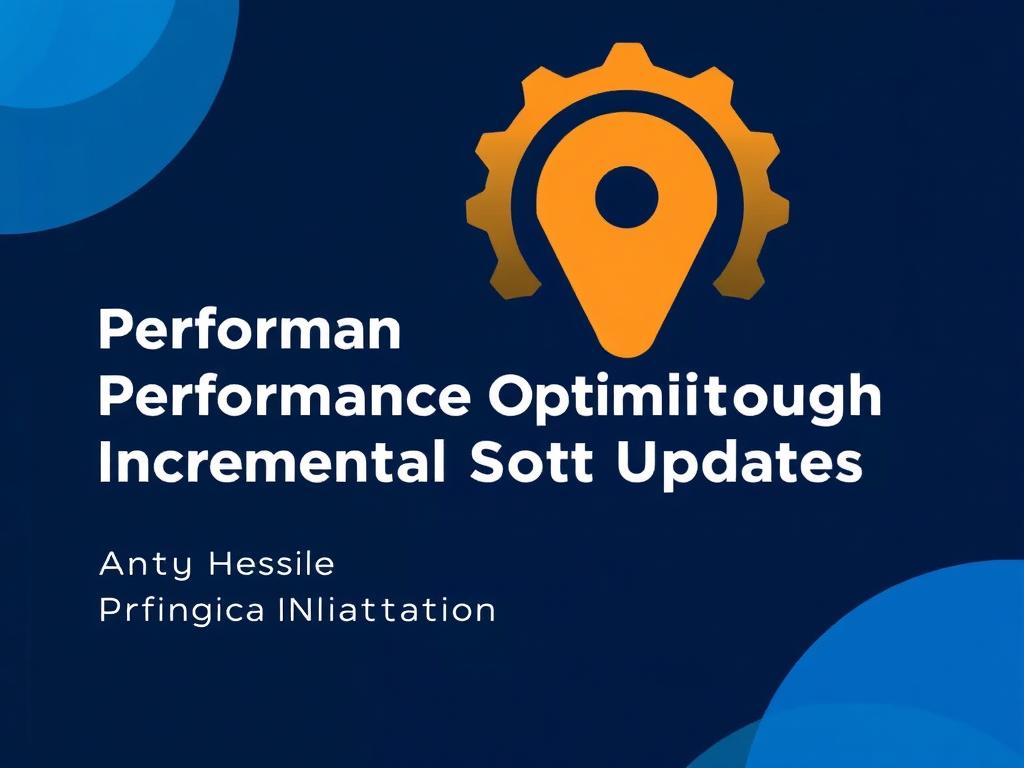Understanding the Basics of Incremental Soft Updates
Performance optimization is a goal for many developers and system administrators alike, and one of the techniques gaining momentum is incremental soft updates. But what exactly are incremental soft updates, and why do they matter? At its core, incremental soft updates refer to a method where systems apply changes in small, manageable portions rather than performing large, resource-heavy updates all at once. This approach reduces system downtime and optimizes overall performance by ensuring the system remains responsive during the update process.
This concept stems from the need to avoid the traditional pitfalls of full update cycles, which can monopolize processing power and slow down critical operations. Incremental updates divide these changes into sequences that the system can apply softly, meaning without locking or major halts. The “soft” element emphasizes minimal disruption, allowing other processes to continue running smoothly. When done effectively, incremental soft updates can greatly enhance both user experience and backend efficiency.
Why Incremental Soft Updates Are Essential for Modern Systems

Systems today are larger and more complex than ever before. They run a vast array of services simultaneously, and downtime — even if momentary — can lead to significant productivity losses. Incremental soft updates address these issues by ensuring updates proceed piece by piece, lowering the risk of bottlenecks.
Moreover, incremental soft updates provide superior fault tolerance. If an error occurs during an update, only the small part being processed needs rollback or correction, rather than the entire system update. This reduces risks and improves reliability. Performance optimization is closely tied to system stability, making incremental soft updates a vital strategy to maintain that balance.
Incremental vs. Traditional Update Processes
To appreciate the advantages of incremental soft updates, it helps to compare them with traditional or “hard” updates. Here’s a straightforward table summarizing the key differences:
| Aspect | Traditional (Hard) Updates | Incremental Soft Updates |
|---|---|---|
| Update Size | Large, applied all at once | Small, applied in increments |
| System Downtime | Significant, often requires halts | Minimal to none |
| Risk of Failure Impact | High, can require full rollback | Lower, easy to isolate errors |
| Performance Impact | High resource consumption | Optimized resource use |
| User Experience | Disruptive | Smoother, less noticeable |
As you can see, incremental soft updates provide a clear advantage in maintaining system responsiveness and stability. The key lies in their ability to push performance optimization by managing how updates interact with ongoing processes.
Implementing Incremental Soft Updates in Your Systems
Now that we understand the significance, how can one implement incremental soft updates effectively? It starts with assessing the system’s architecture. Systems built with modular components are naturally better suited for incremental updates because their components can be updated independently.
Here’s a basic checklist for applying incremental soft updates:
- Modularize Your System: Break down your application or system into independent modules or services.
- Use Version Control: Maintain strict versioning to track incremental changes efficiently.
- Automate Incremental Updates: Use scripts or continuous deployment tools designed to handle small, frequent updates.
- Monitor System Performance: Use monitoring tools to gauge the impact of each incremental update on the system.
- Implement Rollback Mechanisms: Design update processes to quickly revert problematic increments without affecting the whole system.
- Test Incrementally: Test each update increment thoroughly before applying it in live environments.
By following these steps, you create a smooth deployment pipeline that leverages the core benefits of incremental soft updates, contributing to ongoing performance optimization.
Common Tools and Technologies Supporting Incremental Soft Updates
Several tools in the devops and software lifecycle ecosystems support incremental soft updates. For example, container orchestration platforms like Kubernetes allow rolling updates that implement changes incrementally across pods, minimizing disruption.
Similarly, version control systems like Git facilitate incremental code changes and patch uploads. Configuration management tools such as Ansible and Puppet automate these soft updates effectively by pushing small update chunks.
In cloud environments, services like AWS CodeDeploy or Azure DevOps empower developers with tools geared toward incremental deployments, enabling performance optimization through fine-grained control of updates.
Real-World Use Cases Showcasing Incremental Soft Updates

To make this concept clearer, here are some scenarios where incremental soft updates shine in performance optimization:
- Operating System Updates: Modern OSes such as Windows 10 and recent Linux distros apply patches incrementally to avoid long reboots and system unresponsiveness.
- Web Applications: Large-scale web apps use rolling updates to deploy new features without taking down the whole site, ensuring users experience little to no downtime.
- Database Systems: Incremental soft updates enable schema changes and index rebuilds in small steps, preventing significant locking or slowdowns during business hours.
These cases highlight how incremental soft updates can be tailored to different environments, always advancing overall system performance optimization.
Potential Challenges and How to Overcome Them
Of course, no technology is without its challenges. Incremental soft updates require careful synchronization and can introduce complexity in version management. Systems not designed with modularity may struggle to isolate updates effectively.
One workaround is to invest time in refactoring legacy code bases and adopting microservices or service-oriented architectures. Additionally, comprehensive automated testing frameworks and continuous integration pipelines mitigate risks associated with incremental changes. Monitoring and logging also play a critical role in quickly identifying and resolving issues.
Key Benefits of Performance Optimization Through Incremental Soft Updates

- Reduced Downtime: Incremental soft updates minimize disruptions, keeping systems operational.
- Improved Reliability: Smaller update units are easier to test and less error-prone.
- Enhanced User Experience: Users notice fewer interruptions and smoother interactions.
- Efficient Resource Utilization: System resources are optimized during updates, preventing performance degradation.
- Better Fault Tolerance: Problems encountered during updates are easier to isolate and fix without full rollbacks.
These advantages make incremental soft updates a highly recommended approach for those aiming at long-term performance optimization.
Measuring the Success of Incremental Soft Updates
To assess whether your incremental soft update strategy is effective, you need to track key performance metrics:
| Metric | Description | Why It Matters |
|---|---|---|
| System Uptime | Percentage of time the system remains operational | Shows the effectiveness of minimal downtime updates |
| Update Duration | Time taken to complete each incremental update | Helps identify optimization possibilities in update cycles |
| Error Rate | Frequency of errors during or after updates | Measures stability improvements through incremental changes |
| Resource Usage | CPU, memory, and I/O consumption during updates | Indicates how soft updates affect performance |
| User Feedback | Subjective measures like reports of system slowness or issues | Represents end-user satisfaction |
By regularly evaluating these metrics, you can fine-tune your incremental soft updates to maximize performance gains.
Conclusion
Incremental soft updates represent a forward-thinking approach to performance optimization that modern systems cannot afford to overlook. By breaking down updates into small, minimally disruptive pieces, they ensure minimal downtime, improved reliability, and a better overall user experience. While challenges such as coordination complexity and adaptation of legacy systems exist, these can be overcome with smart architecture design, automation, and thorough testing. Implementing incremental soft updates is more than just a technical choice — it’s a strategic investment in achieving sustained, optimal system performance. Whether you manage cloud platforms, enterprise applications, or IoT devices, embracing this incremental approach will help your systems stay agile, responsive, and ready to evolve with minimal disruption.

